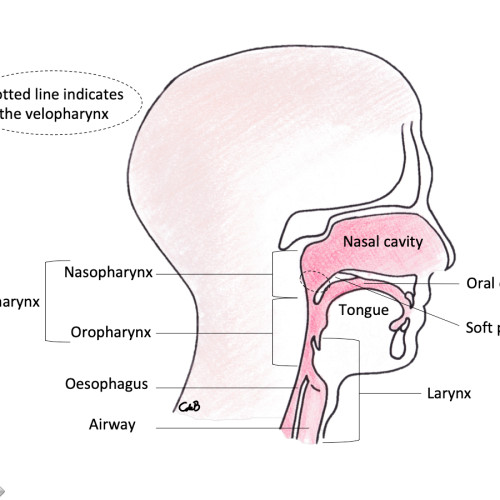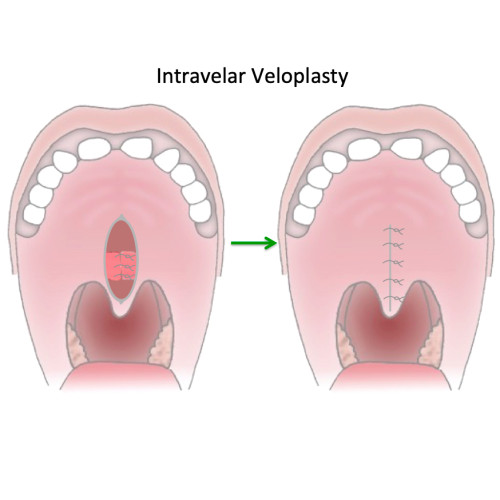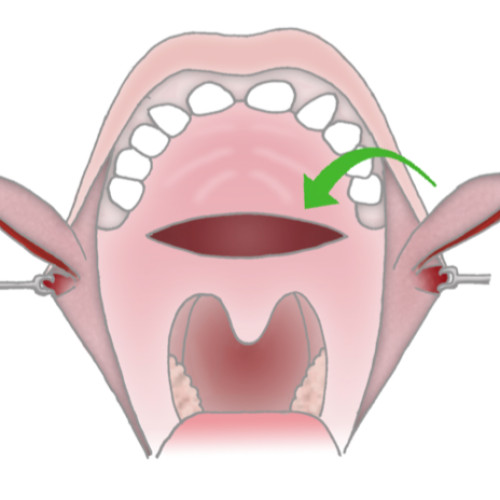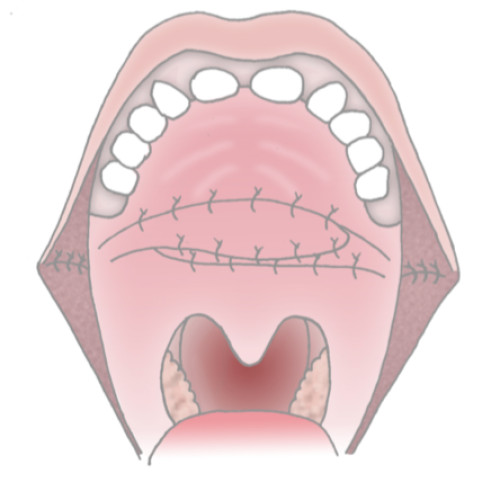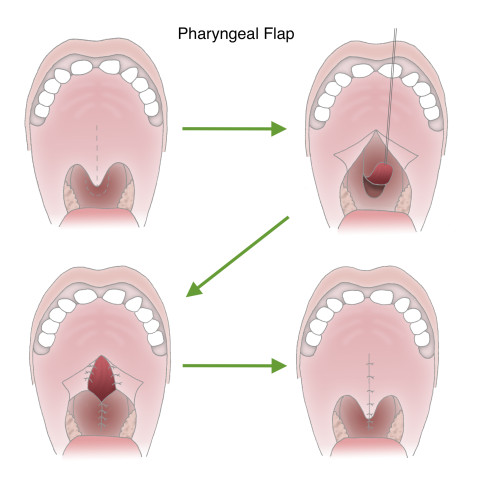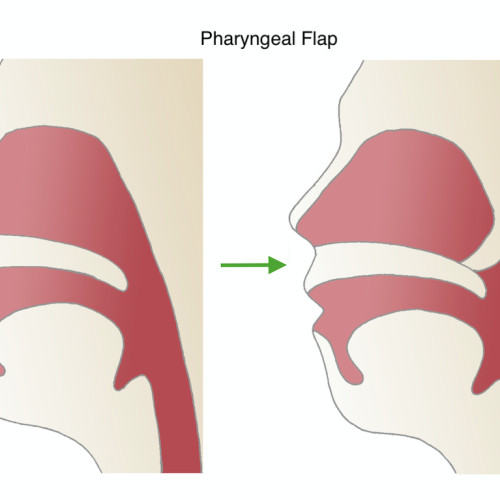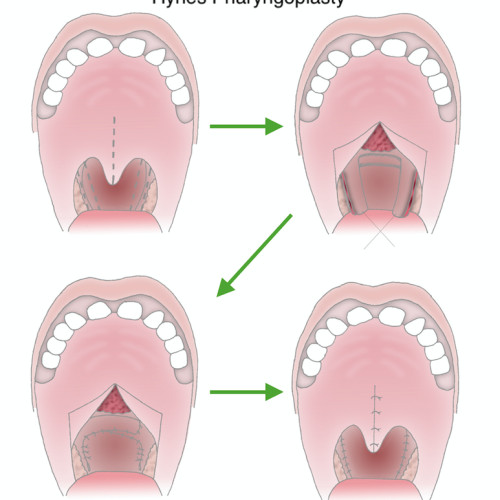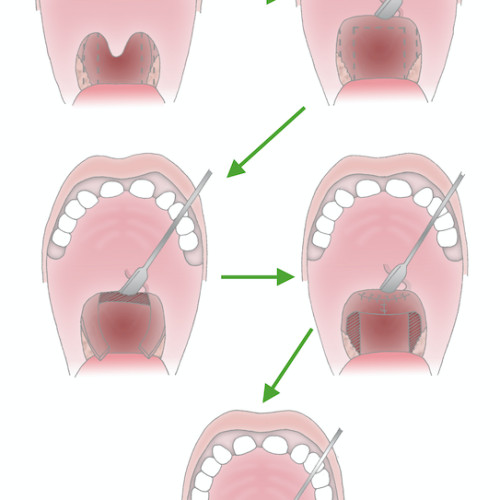Treatment
Secondary Surgery
Further surgery may be required in addition to the primary surgery for a number of possible reasons.
You may find the following information useful in preparing for your child's stay in hospital.
Surgery for hearing
Your child’s hearing will be monitored with hearing tests at regular intervals as part of their cleft care programme and a referral will be made to an Ear, Nose and Throat (ENT) surgeon if there are any concerns.
Some children have a build up of thick fluid in the middle ear which reduces their hearing. Your ENT surgeon may advise to place ventilation tubes (“T-tubes”, “grommets”) that allow air into the middle ear, reducing the fluid build up. This surgery is done as a daycase procedure under general anaesthetic and involves making a small hole in the ear drum into which the tube is placed. Tubes are not permanent and usually fall out spontaneously within 6 months but can break the cycle of fluid build-up in the middle ear.
Surgery for Speech
During normal speech, the soft palate moves to close off the space between the mouth and the nose (the velopharynx). If your child has very nasal sounding speech, this could be due to a hole in the palate (a fistula) or because the palate is unable to make contact with the back wall of the throat. A visit to the Palate Investigation Clinic helps to find the cause and to discuss whether surgery is part of the treatment.
Trying to help the palate close off the space to the nose during speech can involve one, or sometimes more, of the following operations:
Intravelar Veloplasty
The aim of this operation is to move the muscles that lift the palate as far back as possible, making the journey for the palate to the back wall of the throat shorter. Under a general anaesthetic, the soft palate is opened and the muscles are released before moving and stitching them together as far back as possible. Your child usually spends up to 2 nights in hospital and will need to eat a very soft diet for 2 weeks after the operation. It may take up to 6 months or longer for the full effect of the surgery to develop.
Furlow palatoplasty
This operation involves creating and moving “tissue flaps” which has the effect of lengthening the palate, as well as bringing the muscles closer to the back wall of the throat. Your child usually spends up to 2 nights in hospital and will need to eat a very soft diet for 2 weeks after the operation. It may take up to 6 months or longer for the full effect of the surgery to develop.
Buccinator palate lengthening
Some children have very short palates to begin with. In these cases, it may be necessary to add tissue to the soft palate, in order to gain enough length so that the palate can make contact with the back wall of the throat. This can be achieved by separating the soft palate from the hard palate and then pushing it towards the back of the throat. The resulting gap is filled using tissue from each inner cheek, including a small bit of the buccinator muscle to ensure a good blood supply.
Your child usually spends up to 2 nights in hospital and will need to eat a very soft diet for 2 weeks after the operation. 6 weeks after this surgery, your child will be admitted for division of the base of the flaps from the cheeks, as a daycase procedure. It may take up to 6 months or longer for the full effect of the surgery to develop.
Pharyngeal Flap
A pharyngeal flap is a type of pharyngoplasty, that is, it aims to change the shape of the velopharynx, through which air is escaping during speech. First, the soft palate is split down the middle before taking a flap of tissue from the back wall of the throat. This tissue, which remains attached to the throat at the top, is swung forwards and stitched into the soft palate. The resulting bridge helps to reduce air escape into the nose during speech. Your child usually spends up to 2 nights in hospital and will need to eat a very soft diet for 2 weeks after the operation. There may be a degree of snoring after the operation.
Hynes Pharyngoplasty
This operation aims to create a “bump” on the back wall of the throat, effectively bringing the contact point closer to the soft palate. As this operation is done high up in the nose, it is often necessary to split the soft palate to gain access. 2 tissue flaps are then lifted from the sides of the nasal throat and moved into the midline, to create a mound of tissue. This helps the soft palate to make contact with the back wall of the throat. The soft palate is closed again, your child will need to eat a very soft diet for 2 weeks after the operation. It is common to spend up to 2 nights in hospital and it may take up to 6 months for the full effect of the surgery to develop.
Orticochoea Pharyngoplasty
This operation is very similar to a Hynes pharyngoplasty but performed lower in the oral cavity. Tissue is taken from just behind the tonsils and stitched into the back wall of the throat within the mouth. This creates a sling around a small hole, reducing air escape into the nose during speech. Your child usually spends up to 2 nights in hospital and will need to eat a very soft diet for 2 weeks after the operation. The effect from surgery is often seen very early on. There may be a degree of snoring after the operation.
Jaw surgery
The surgery to correct the cleft of the hard and soft palate will leave a degree of scar tissue. Depending on the child, this scar tissue may affect how well the upper jaw grows. When facial growth has finished after puberty, some children’s upper jaws may be shorter than their lower jaws, leaving the upper teeth behind the lower ones ("underbite"). The Orthodontist and Maxillofacial surgeon will discuss with you the option of moving the upper jaw forward.
The aim of this surgery is to give the best possible position of the teeth and appearance of the face. It usually involves 18 months of orthodontic preparation and is generally carried out at 18 years of age or later. Under a full anaesthetic, the tooth-bearing part of the upper jaw is detached from the remaining bone and moved forward, before being fixed in its new position. Patients usually spend a few nights in hospital and will then need to eat a soft diet for 4 weeks.
Adjustment of the lip and nose
Final adjustments to the lip and the nose are best made at the end of all orthodontic treatment and/or jaw surgery, as these determine where the lip and nose will end up. Surgery is very much focused on the individual issues that a patient identifies and planned accordingly. It may involve day surgery only for lip revisions and overnight stay for nose operations ("rhinoplasty").
